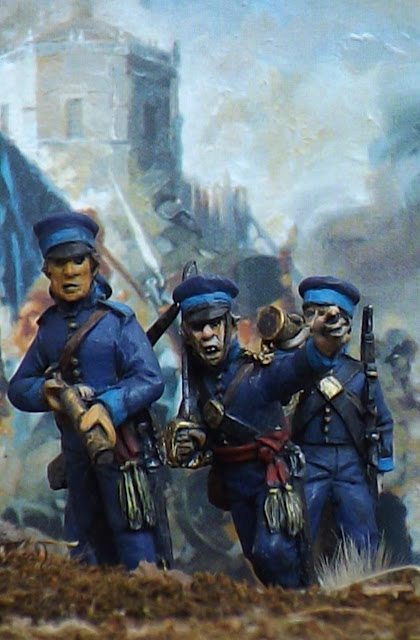Cristóvão (or Christopher) da Gama was the son of Vasco da Gama and younger brother of Estêvão da Gama.
 He first came to India in 1532 with his brother; returned to Portugal in 1535, then joined Garcia de Noronha in sailing to Diu
6 April 1538. Many times in these travels he demonstrated a quick mind
that saved his companions. In recognition of his valour, in 1541, his brother Estêvão, then Viceroy of India, gave him command of a ship in the fleet Estêvão led into the Red Sea against the Ottoman naval base at Suez.
He first came to India in 1532 with his brother; returned to Portugal in 1535, then joined Garcia de Noronha in sailing to Diu
6 April 1538. Many times in these travels he demonstrated a quick mind
that saved his companions. In recognition of his valour, in 1541, his brother Estêvão, then Viceroy of India, gave him command of a ship in the fleet Estêvão led into the Red Sea against the Ottoman naval base at Suez.The Emperor took refuge in the remotely located mountain fortresses, and turned to the Portuguese for help.
João Bermudes, a subordinate member of the Portuguese mission of 1520, who had remained in the country after the departure of the embassy, was sent to Lisbon.
Subsequentely, a Portuguese fleet under the command of Estêvão da Gama, was sent from India and arrived at Massawa
in February 1541.
Here he received an ambassador from the Emperor beseeching him to send help against the Muslims. In the following July, a force of 400 musketeers, under the command of Dom Cristóvão da Gama, marched into the interior, and joined the native troops.
Alongside his Ethiopian allies, Dom Cristóvão was victorious against larger forces in four battles, but was seriously wounded in the last one, the Battle of Wofla (28 August 1542). His arm broken by a bullet, he was captured on that very night by followers of Imam Ahmad, and brought to his presence.
The Imam tortured his captured opponent, in an attempt to force him to convert to Islam.
Frustrated by da Gama´s fortitude, the Imam eventually drew his sword and beheaded him.
On February 21, 1543, however, Iman Al-Ghazi was shot and killed in the Battle of Wayna Daga by one of da Gama´s arquebusiers, and his forces were totally routed.
Here he received an ambassador from the Emperor beseeching him to send help against the Muslims. In the following July, a force of 400 musketeers, under the command of Dom Cristóvão da Gama, marched into the interior, and joined the native troops.
Alongside his Ethiopian allies, Dom Cristóvão was victorious against larger forces in four battles, but was seriously wounded in the last one, the Battle of Wofla (28 August 1542). His arm broken by a bullet, he was captured on that very night by followers of Imam Ahmad, and brought to his presence.
The Imam tortured his captured opponent, in an attempt to force him to convert to Islam.
Frustrated by da Gama´s fortitude, the Imam eventually drew his sword and beheaded him.
On February 21, 1543, however, Iman Al-Ghazi was shot and killed in the Battle of Wayna Daga by one of da Gama´s arquebusiers, and his forces were totally routed.
Sir Richard Burton, in his First Footsteps in East Africa, referred to him as "the most chivalrous soldier of a chivalrous age." His actions were essential for the survival of Christianity in Ethiopia.
An account of this campaign in the Ethiopian highlands was later written by Miguel de Castanhoso, who accompanied da Gama and was an eye-witness to almost everything he recorded. The 1564 edition of his book "Historia das cousas que o muy esforçado capitão Dom Christouão da Gama
fez nos Reynos do Preste Ioão com quatroce[n]tos portugueses que consigo
leuou" can be found here (in Portuguese)
 |
| Miguel de Castanhoso´s book cover - 1564 edition |
 |
| Excerpt from "Historia das cousas..." by Castanhoso |
Castanhoso describes Dom Cristóvão´s forces flags,
" ... the Captains with their soldiers, all with arquebuses, with their blue and white damask banners with red crosses, and the Royal Flag of carmine and white damask, with the Cross of Christ.
Castanhoso also describes da Gama´s clothing when he first met the Ethiopian Queen: "And the Capitão-Mor (was) very gentlemanly dressed, wearing gold and purple satin trousers and doublet with many plaits, and a French cape of fine black cloth, all quilted with gold, and a black cap with a very rich gold medal".























